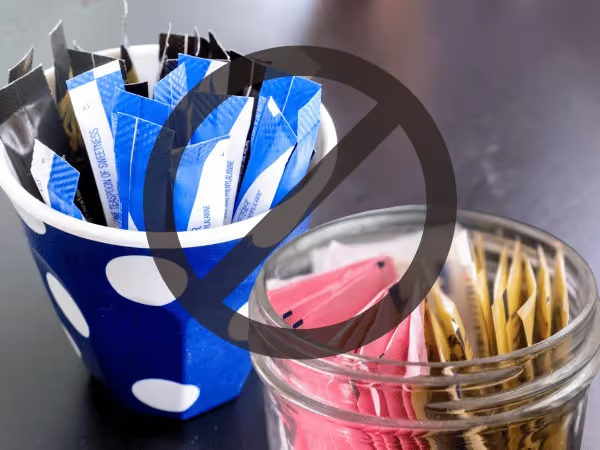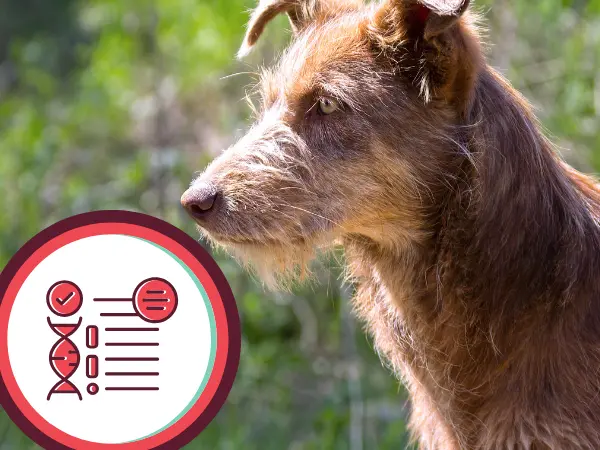Looking for new ways to show appreciation and love for your canine family member? Try whipping up some homemade dog treats! If you haven’t made homemade dog treats before, it is sure to be a new set of exciting flavors for your pup — and as a pet parent, you’ll get full control over what goes into these treats.
So where exactly does a pet parent start? What ingredients are safe? Should dogs be eating anything else apart from meat?
This complete guide answers all of these questions and more. We’ve put together essential tips when making homemade dog treats, as well as a few easy homemade dog treats recipes to start with.
The Basics of Making Homemade Dog Treats
Making homemade dog treats is an exciting journey for many dog parents. But instead of simply handing out safe homemade dog treats recipes, we wanted to lay down some fundamental tips and watch-outs so that pet parents can confidently choose, critique, or even modify a homemade dog treats recipe.
Let’s talk about the types of homemade dog treats one can make, what ingredients can be included, and so on.
Sliced, Baked, or Frozen?
There is no hard and fast rule when it comes to what homemade dog treats should look like or how intricately prepared they need to be. Homemade dog treats can take the form of golden brown baked cookies, frozen mixtures, sliced fruits, unseasoned vegetables, or deboned, unseasoned meat. That’s part of the fun. You can try out different kinds of recipes — from simple ones to more complex ones — and see which ones your pup will like the most!
Dogs are Omnivores
When it comes to choosing ingredients for homemade dog treats, pet parents may wonder if dogs should be given fruits and vegetables at all. Here is the answer: even though dogs are direct descendants of the gray wolf, they have dietary differences. Gray wolves are carnivorous (requiring a diet that is primarily meat-based), while dogs are omnivores (able to eat both meat- and plant-based food items.)
So what does this mean for pet parents that are eager to serve up a variety of treats? It means that options abound. You can serve different kinds of meat, veggies, and fruits as treats for your canine pup. But with that said, even if dogs are omnivores like us, there are still certain types of food that may be safe for us but unsafe for them. There may also be certain foods that are safe for dogs in general, but not for other dogs with food sensitivities.

Watching Out for Harmful Ingredients
Potential Food Allergy Triggers
Just like humans, dogs can have food allergies. These allergies can be towards food that we often see as “usual” food items to give to dogs. Here are a few common food allergy triggers in dogs:
- Beef
- Dairy
- Chicken
- Eggs
- Fish
- Seafood
One of the biggest clues that a dog is allergic to a food item is if they show symptoms like scratching, chewing on their paws, shedding, vomiting, and diarrhea. If you would like to safely and decisively rule out your canine family member’s food allergies, book an appointment for veterinary allergy testing.
Sugar (Natural & Processed)
When preparing homemade dog treats that contain sweet ingredients (e.g. fruits, peanut butter), make sure to give these treats in moderation.
Sugar, whether processed or natural, is not good for canines in large quantities. When dogs eat too much sugar, they become susceptible to stomach upset and could exhibit symptoms like gas, diarrhea, and vomiting. Pet parents are also advised to consider the size of their dog. A small amount of sweet treats for a big dog may be too much for smaller pups.
Xylitol in Peanut Butter & Other Artificial Sweeteners
Xylitol is a common artificial sweetener used in peanut butter — and peanut butter is used in a lot of homemade dog treats recipes. Unfortunately, xylitol is highly toxic to dogs, and this is why we advise pet parents to look at the peanut butter label closely before giving any of it to their dogs.
Note: Xylitol may also be present in some brands of toothpaste, mouthwash, chewing gum, and other types of candy. Make sure to keep these away from your pup!
Other types of artificial sweetener, such as the ones listed below, may cause gastrointestinal irritation in dogs, leading to symptoms like diarrhea and vomiting.
- Aspartame;
- Saccharin;
- Stevia;
- Sucralose; and
- Erythritol.
Gastrointestinal symptoms are more likely to happen if any the above listed artificial sweeteners is given in large amounts. And although not all artificial sweeteners are as toxic and dangerous as xylitol, it is best to leave them out of homemade dog treats when possible.

Other Toxic & Harmful Ingredients
Aside from artificial sweeteners, please AVOID the following HARMFUL ingredients when making homemade dog treats:
- Chocolate - toxic to dogs
- Grapes - toxic to dogs
- Raisins - toxic to dogs
- Marijuana - toxic to dogs
- Alcohol - toxic to dogs
- Alliums (garlic, onion, shallots, scallions, chives, & leeks) - toxic to dogs
- Macadamia nuts - toxic to dogs
- Other types of nuts - can cause stomach problems or aggravate pancreatic issues
- Avocado - can cause vomiting and diarrhea
- Soy sauce - the high sodium content can cause salt poisoning, even in small amounts
The above list does not encompass all ingredients that can cause harm to dogs. When in doubt about any ingredient you will use for a homemade dog treats recipe, it is recommended to always double check.
You can also look at our vet-approved reference, The Healthiest Human Foods That Dogs Can Eat, for a list of safe food items to include in your homemade dog treats recipe!
Simple Homemade Dog Treats Recipes You Can Try Right Now
1. Fresh Sliced Fruit
It doesn’t get simpler than sliced fresh fruit — with an emphasis on “fresh.” It is recommended for pet parents to avoid canned fruits, apple sauce, or other fruit-based, store-bought products that have added sugar. Due to the simplicity of this treat, it may not be seen as a homemade dog treats recipe, but this doesn’t reduce this treat’s appeal with regard to taste and quick preparation.
Sliced apples, bananas, and watermelon are a few favorites. Pet parents would need to remove inedible parts like the apple core and watermelon seeds.To experiment with texture, you can also try freezing these fruit slices to make a tasty, cool treat for warmer weather.
Note: As a reminder, make sure to give this homemade dog treat in moderation. Less than half a banana, two apple slices, and a few chunks of watermelon are general portion recommendations for average-sized dogs.

2. Cooked, Unseasoned Meat & Veggies
Whether steamed, baked, or boiled, cooked meat and vegetables can make simple but delicious homemade treats for your pup.
A few great choices of meat include chicken, turkey, beef, and fish. As for veggies, you can try pumpkin, carrots, green beans, and spinach. In our article, Top 10 Healthiest Human Foods That Dogs Can Eat, we discussed the health benefits that each of these ingredients offer, so make sure to give that a read!
This homemade dog treats recipe is incredibly simple because the key is to leave out any and all seasonings, as recommended by our vets. This helps in ensuring that these treats are as healthy as possible for your pup.
Note: Although the above meat and veggies may seem like regular food for dogs, they are still considered treats. They are not, by themselves or mixed together, meant to take the place of well-balanced dog food that has all the daily requirements that dogs need.
3. Frozen Peanut Butter & Banana
Putting together two well-loved flavors, peanut butter & banana, you can make a sweet frozen treat that your pup is sure to love. To prepare this treat, follow these steps:
Serving size: 1 (for average-sized dog) | Ingredients: ⅓ banana, 1 tsp. unsalted, unsweetened peanut butter
- Blend together ⅓ of a banana and 1 teaspoon of unsalted, unsweetened peanut butter.
- Pour the mixture into silicone molds.
- Put the silicone mold into the freezer.
- Wait for the treat to harden before serving this cool treat to your pup!
Note: Want a step up from the above homemade dog treats recipe? Try incorporating the above ingredients into a lick bowl that will keep your pup fed and entertained! See our lick bowl recipe here.

4. Baked Chicken & Rice Balls
Some pet parents may recognize chicken and rice as food to serve a dog that isn’t feeling well. This type of diet is recommended by some veterinarians as these ingredients are easy to digest and very low in fat. With just a few tweaks (and an egg), chicken and rice can be turned into a protein- and carbohydrate-rich treat for your pup! To prepare this treat, follow these steps:
Serving size: 1 (for average-sized dog) | Ingredients: ⅓ cup ground chicken, ¾ cup cooked rice, 1 beaten egg
- Mix the ground chicken, cooked rice, and beaten egg inside a bowl.
- Prevent the mixture from being watery; drain away any excess egg.
- Roll the mixture into small balls.
- Bake the chicken and rice balls at 350 °F for 15 minutes.
- Turn the chicken and rice balls over and let them bake for another 15 minutes. They should end up with a golden brown color.
- Allow these homemade dog treats to cool before serving to your pup!
Final Thoughts on Homemade Dog Treats Recipe
We hope you enjoyed this guide on how to make homemade dog treats. As a final note, though the safe ingredients listed here are great for most dogs, some canine family members may have special needs based on food allergies or health conditions. We recommend pet parents to see their veterinarians for specific questions about food sensitivities or about beneficial food items to support a pet that has a medical issue.
We'd also like to note that there are commercially available pet treats that offer numerous health benefits; our veterinarians can give guidance on choosing the best treats for your pet!
Note: If you're looking for healthy, vet-preferred dog treats for your canine companion, check out SplootRX, an online pet store and pharmacy that you can count on for the best pet supplies!
Boost Your Pet’s Wellness & Save With SplootPack™
Vet Care is now easier than ever. With the SplootPack™ membership, you can save up to $600+ on essential veterinary care—available in Sploot’s Denver and Chicago vet clinics.
Get 3 waived wellness exams or check-ups, 10% OFF on all Sploot’s services, exclusive discounts, and more!
- Learn more - SplootPack™ Denver →
- Learn more - SplootPack™ Chicago →
Get Next Level Vet Care at Sploot Vets
If you have questions or concerns, Sploot Veterinary Care is always here to help. We provide all-in-one veterinary care, with primary care, urgent care, and emergency vet services all under one roof! We have multiple convenient locations in Denver, Chicago, and Colorado Springs. Visit us anytime within our extended vet clinic hours or reserve an appointment online with just a few taps. Our Fear Free certified medical teams ensure that your pet gets top-tier care and utmost comfort.
Till next time, we’re with you every pounce of the way!






